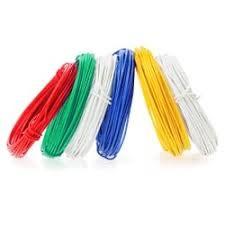Cables in Space Exploration: Powering Satellites and Deep-Space Missions

In the grand narrative of space exploration, we often focus on the rockets, the habitats, the solar panels, and the rovers that land on distant planets. But powering this incredible journey, from launchpad to deep space, is an intricate and often overlooked network of essential infrastructure: cables. These are not your average home electrical wires; they are marvels of extreme engineering, meticulously designed to withstand the most hostile environments imaginable. The success of every mission, from a simple communications satellite to a complex rover on Mars, hinges on the reliability and performance of its cables.
The Extreme Demands of the Space Environment
The conditions in space are brutally unforgiving. This pushes the design of space-grade cables to its absolute limits, demanding solutions for a unique set of challenges:
-
Extreme Temperatures: Cables must function flawlessly across a massive temperature range, from the super-chilled vacuum of space (−270∘C) to the blistering heat of direct sunlight or a planet's surface.
-
Radiation Exposure: Charged particles and high-energy radiation in space can degrade traditional polymer-based insulation, causing brittleness and electrical failure.
-
Launch and Landing Forces: Cables must endure immense mechanical stress, including extreme vibration, g-forces, and shock loads during launch, deployment, and landing.
-
Near-Vacuum and Outgassing: In the vacuum of space, certain materials can release trapped gases, which can contaminate sensitive instruments and optics. Cables must be made from special "low-outgassing" materials.
-
Weight Minimization: Every kilogram sent into space costs a fortune. Cables must be as lightweight as possible without sacrificing an ounce of performance or durability.
-
Electromagnetic Interference (EMI): With sensitive data, control signals, and powerful electrical systems all packed into a tight space, cables must be expertly shielded to prevent cross-talk and interference.
-
Limited Maintenance: Once deployed, most space cables cannot be repaired or replaced. They must work perfectly for their entire mission lifespan, which can be decades.
Powering the Journey: Key Cable Technologies for Space
To meet these demands, the cable industry has pioneered several innovative solutions:
1. High-Performance Conductors
While copper and aluminum are the standard, space applications often use conductors designed for weight and efficiency. For signal integrity, special alloys or even optical fibers are used. For power, the focus is on maximizing current carrying capacity while minimizing weight.
2. Specialized Insulation and Jacketing
This is where much of the innovation lies. Instead of standard PVC, aerospace cables use advanced polymer formulations that are:
-
Radiation-Resistant: Materials like fluoropolymers and polyimide films (e.g., Kapton) are chosen for their resilience to radiation.
-
Temperature-Stable: Capable of withstanding extreme thermal cycling.
-
Low-Outgassing: Formulated to release minimal volatile compounds in a vacuum.
-
Flexible and Durable: The outer jackets must resist cracking and abrasion while remaining flexible enough for installation.
3. Smart and Hybrid Cables
The need to save space and weight has led to the development of highly integrated cabling solutions:
-
Hybrid Power/Data: These cables combine power conductors and optical fiber strands within a single jacket, eliminating the need for separate cable runs.
-
"Smart" Cables: Some cables are designed with built-in sensors to monitor their own health, temperature, or strain, providing real-time data back to the control system. This kind of advanced manufacturing expertise is at the core of what leading cable manufacturers in uae are developing for terrestrial and future space applications.
4. Advanced Shielding Techniques
To combat EMI in the crowded electronics bays of a satellite or rover, shielding is a multi-layered science:
-
Braided Shields: Using braided copper or aluminum wire to protect signals from external interference.
-
Foil Shields: A thin layer of metal foil wrapped around conductor pairs for high-frequency shielding.
-
Individual Shielding: In highly sensitive applications, each wire pair might have its own shield to prevent cross-talk.
-
Conformal Coatings: A thin, insulating film is sometimes applied to circuit boards and wire harnesses for additional protection against moisture and environmental effects.
The Role of Ground-Based Innovation
The challenges of space don’t just inspire new cables; they also drive a relentless focus on quality and precision back on Earth. A cable failure in space is a mission-ending event, so manufacturing must be flawless. This has led to the development of:
-
Ultra-High Purity Materials: Sourcing raw materials from quality cable suppliers in uae with rigorous quality control standards is non-negotiable.
-
Zero-Defect Manufacturing: Factories use advanced quality control systems, including machine vision and automated testing, to ensure every centimeter of cable is perfect.
-
Digital Traceability: Every cable's manufacturing history—from raw material batch to the exact machine that insulated it—is digitally logged for full traceability.
Conclusion: The Unsung Heroes of the Cosmos
From the power lines on the International Space Station to the data cables on the Perseverance Mars rover and the high-speed links on the Webb Telescope, cables are the unsung heroes of space exploration. They are not merely wires; they are high-tech conduits of power, data, and life-critical signals, representing the pinnacle of cable engineering. The extreme demands of the cosmos drive innovation that pushes the entire industry forward, creating new materials and manufacturing processes that ultimately benefit a wide range of terrestrial applications, from aviation to data centers. In the end, the cables that connect us here on Earth are getting smarter and more reliable because of the ones we send to the stars.
Your Space Cable Questions Answered (FAQs)
-
Why can't we use regular electrical cables in space?
Regular cables would fail due to several factors: their insulation would degrade from radiation, become brittle in extreme cold, and release harmful gases in a vacuum. They also couldn't withstand the immense G-forces and vibrations of a rocket launch. -
What does "low-outgassing" mean for a space cable?
Low-outgassing means the cable materials release a minimal amount of trapped gases or volatile compounds in a vacuum. This is crucial because these released substances could condense on sensitive equipment, like a telescope's mirror, and degrade its performance. -
What material is commonly used for insulation in space cables?
Advanced fluoropolymers and polyimide films (like Kapton) are commonly used due to their excellent resistance to extreme temperatures, radiation, and outgassing, making them ideal for the harsh space environment. -
Are space cables typically heavier or lighter than normal cables?
Space cables are meticulously designed to be as lightweight as possible. Every gram counts when launching into space. Engineers use lightweight conductors, thin-wall insulation, and integrated hybrid designs to minimize weight without compromising performance.
How do manufacturers ensure a cable will last for a decades-long space mission?
Manufacturers use rigorous, accelerated life-testing processes that simulate the harsh conditions of space over an extended period. This includes thermal vacuum testing, radiation exposure, and extreme vibration testing to prove the cable's reliability and longevity before it's ever launched.
- Art
- Causes
- Crafts
- Dance
- Drinks
- Film
- Fitness
- Food
- Games
- Gardening
- Health
- Home
- Literature
- Music
- Networking
- Other
- Party
- Religion
- Shopping
- Sports
- Theater
- Wellness


